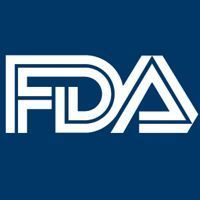Commentary
Video
Dr Ramdial on Gemcitabine/Clofarabine/Busulfan for Lymphoma Stem Cell Transplant
Author(s):
Jeremy L. Ramdial, MD, discusses the myeloablative conditioning regimen gemcitabine, clofarabine, and busulfan in patients with aggressive lymphomas.
Jeremy L. Ramdial, MD, assistant professor, Department of Stem Cell Transplantation and Cellular Therapy, Division of Cancer Medicine, The University of Texas MD Anderson Cancer Center, discusses findings from a phase 1/2 trial evaluating a myeloablative conditioning regimen comprising gemcitabine plus clofarabine and busulfan (GemCloBu) in patients with aggressive lymphomas receiving allogeneic stem cell transplant.
This trial enrolled 64 patients with refractory aggressive B-cell non-Hodgkin lymphoma (NHL; n = 31; including de novo disease, transformed large B-cell lymphoma, and Burkitt lymphoma), T-cell NHL (n = 22), and Hodgkin lymphoma (n = 11) who had received a median of 4 prior lines of therapy (range, 2-10). A total of 28% of patients had progressed on prior autologous stem cell transplant, and 66% of patients had active disease at the time of allogeneic stem cell transplant. Additionally, 28 and 36 patients received an HLA-matched unrelated donor or matched sibling donor allogeneic stem cell transplant, respectively.
During the phase 1 portion of the study, gemcitabine dosing was escalated. The maximum tolerated dose of gemcitabine was determined to be the third dose level investigated, which was 975 mg/m2 per day for 2 cycles. The phase 2 portion evaluated overall response rate (ORR), non-relapse mortality (NRM) rates, and graft-vs-host disease (GVHD) rates, Ramdial says. Across the B-cell NHL, T-cell NHL, and Hodgkin lymphoma cohorts, the ORRs were 78%, 93%, and 67%, respectively, and the complete response rates were 71%, 93%, and 67%, respectively. At day 100 and 1 year, the NRM rates were 7% and 18%, respectively. At a median follow-up of 60 months (range, 12-110), the event-free survival (EFS) and overall survival (OS) rates in the entire population were 36% and 47%, respectively. The EFS and OS rates in the B-cell NHL cohort were 34.5% and 54%, respectively; these values in the T-cell NHL cohort were both 59%. The rate of grade 3/4 acute GVHD was 18%, and the rate of chronic GVHD was 33%. The instances of GVHD ranged in severity, Ramdial concludes.









